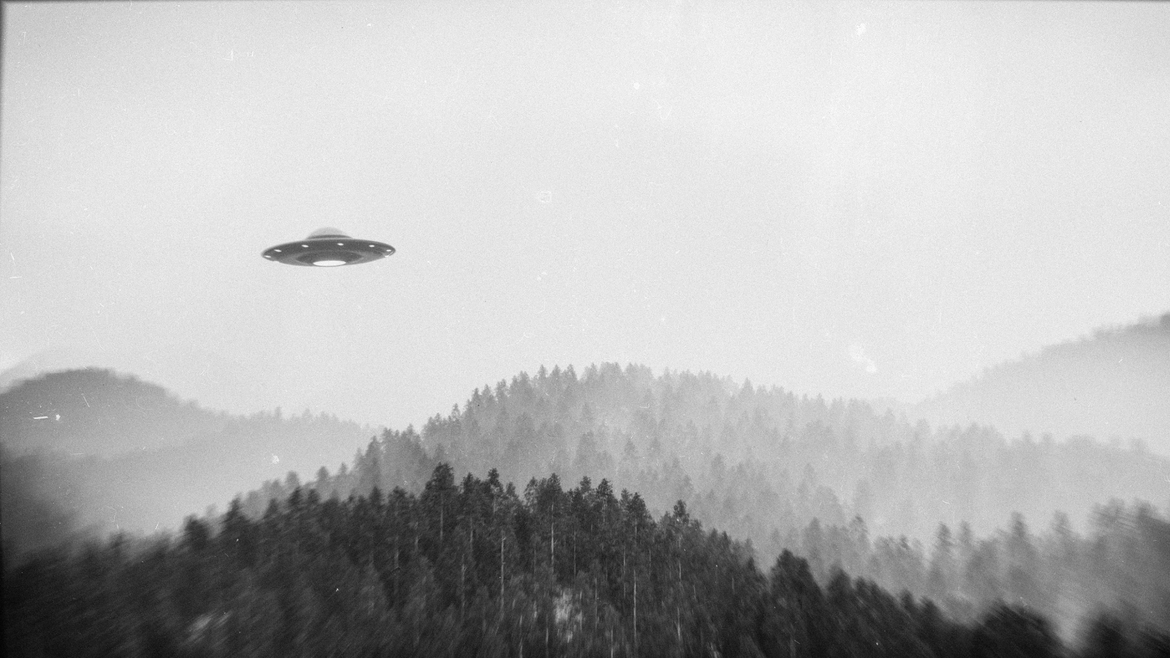Historian and Author Garrett M.Graff writes that some in the military were concerned that the Russians had managed to kidnap Nazi rocket scientists at the end of World War II, and that working together they had created a flying saucer.
The United States government began studying unidentified flying objects (UFOs) in the wake of World War II over fears that the crafts were coming from Russia, not another galaxy, according to a new book.
It has now been 75 years since the Pentagon began its decades-long quest to try and determine what these UFOs are, where they come from, and who is creating these vessels.
It all kicked off with the creation of Project Sign in 1948, but in his new book "UFO: The Inside Story of the U.S. Government's Search for Alien Life Here ― and Out There," historian Garrett M. Graff writes that the fear among military officials was that these flying saucers were coming from Russia rather than a galaxy far, far away.
Graff writes that military officials were concerned that the Russians had managed to kidnap Nazi rocket scientists at the end of World War II, and that working together they had created a flying saucer.
These fears were not entirely unfounded.
"This is exactly what the United States was doing in the summer of '47," said Graff while appearing on National Public Radio's "Fresh Air" podcast. "We had brought all these Nazi rocket scientists over to places like Los Alamos and the White Sands Proving Grounds and captured V2 rockets, and we were embarking on our own race to build missiles and rockets at the dawn of the space race."
Graff later explains that the United States did not kidnap the Nazi rocket scientists they brought over to work for the government but rather "forgave their World War II war crimes, which were extensive and awful, tens of thousands of people dying in slave labor camps as part of the Nazi rocket programs, and we brought them over and basically let them live peacefully in post-war America."
That effort was known as Operation Paper Clip
The sudden uptick in UFO sightings in the summer of 1947 quickly became a cause for panic among many in the military, Graff explained to NPR host Terry Gross.
"Our fear was that the Soviets were ahead of us with this flying saucer technology, that it represented some secret craft that their own side of kidnapped Nazi rocket scientists had achieved before the U.S. had unlocked this technology," said Graff.
Suddenly, the government wanted to know everything about these UFOs, which meant changing public perception in hopes of increasing the likelihood that Americans would not be ashamed to share information about any possible sighting, said Graff.
"Ironically, it is the government and the Air Force that first popularizes the term UFOs in the late 40s and early 50s to try to destigmatize the conversation around flying saucer sightings because very quickly people begin to laugh and make fun of people reporting flying saucers, and then this becomes a huge part of pop culture," said Graff. "In the early 50s you have the alien invasion movies, and it becomes this very obvious feedback loop that plays out across decades of the pop culture interest in flying saucers and UFOs and aliens."
And as the number of reported sightings of UFOs increased so too did national security concerns, which resulted in UFOs becoming more and more a part of American pop culture.
The Pentagon would go on to launch more programs, including Project Grudge and Project Blue Book, but never arrive at an answer to explain the UFOs,
Then, once the military ruled out the possibility that these UFOs were coming from Russia, they seemed to simply lose interest in the subject, said Graff.
Moving forward, Graff said that the best way to learn more about these UFOs is by making it a global project, and notes that even if they are not from other galaxies there is still much to be learned from these vessels.











